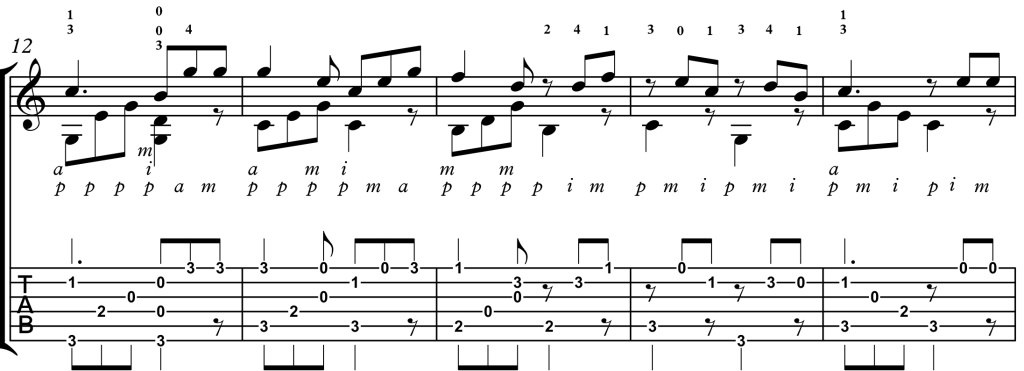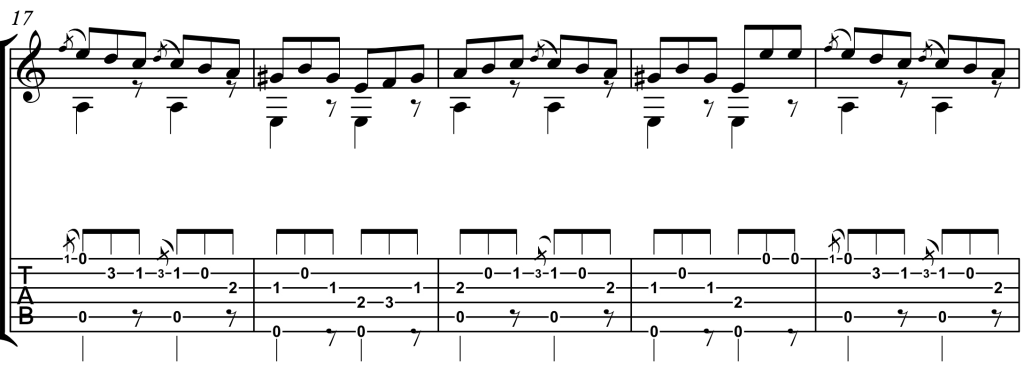How to Play Classical Guitar Grace Notes
Utilizing grace notes can improve your classical guitar dramatically, and the etude in this lesson will give you a beautiful context to practice classical guitar grace notes in. Grace notes are meant as ornaments for the other notes around it. In this piece, the first grace note is an “F”, which moves as quickly as possible down to an “E”. The effect this has on the music is lilting and hypnotic.
In general, slurs should be used to play grace notes. Either pull-off, or hammer-on to the note. The grace note itself does not get any time, and should be played on the beat. This etude will train the pull-off grace note, using a variety of finger combinations. The slur should be just as loud as a plucked note, and have a nice pop to its sound. Oftentimes it is necessary to use a “rest-stroke” with the left hand to achieve this. Allow your finger to come to rest on the string below it once the slur has been executed.
The triplet feel of this etude is very important, and must have a healthy pulse. The grace notes fall on the beats, be sure to emphasize these beats so the listener can feel the rhythm as well. It is also helpful to practice the a-minor scale as a warm up, as this piece is using that scale almost entirely. The few g-sharps that show up are from the A harmonic-minor scale, and act as a leading tone. These leading tones create tension, which resolves back up to A. When playing these g-sharps, be sure to add an element of stress. When resolving back up to A, be sure to relieve that stress from your playing. This makes for a much more animated piece of music for both the performer and the audience.
This lesson has been taken from my new guitar book, The Beginner Classical Guitar Method. It is a book that presents a clear path to mastery using real repertoire from a rich selection of studies. Check it out now from Amazon.
“The artists you work with, and the quality of your work speaks for itself.”
Tommy Emmanuel
© Copyright Fundamental Changes Ltd 2025
No.6 The Pound, Ampney Crucis, England, GL7 5SA







